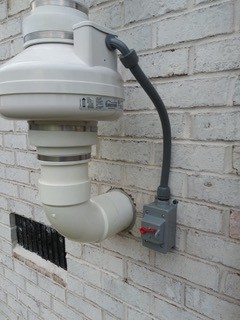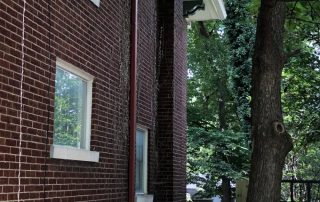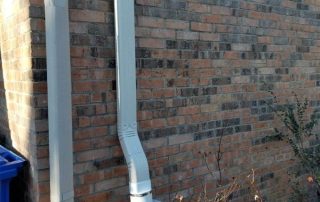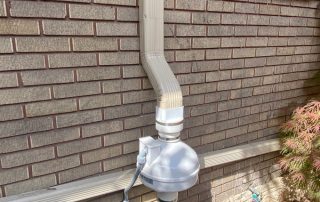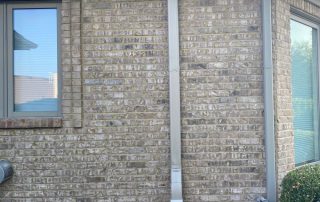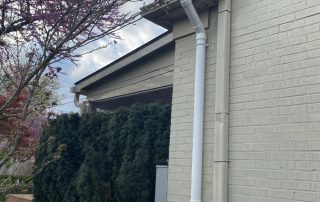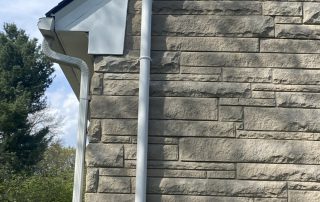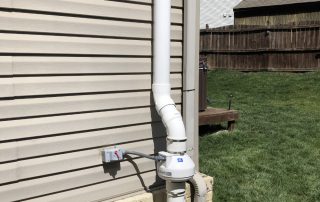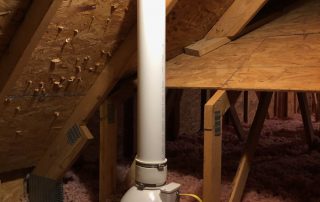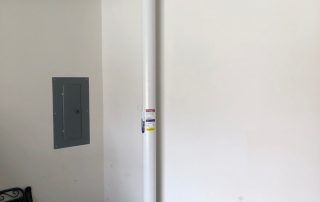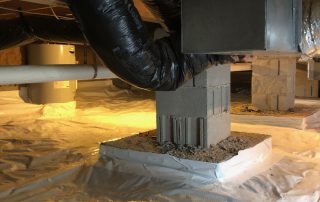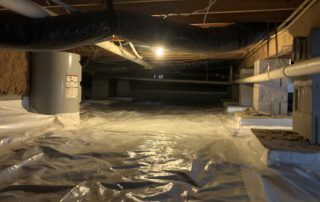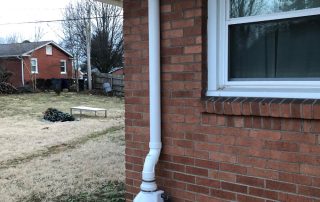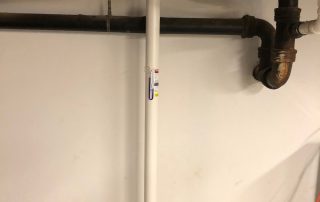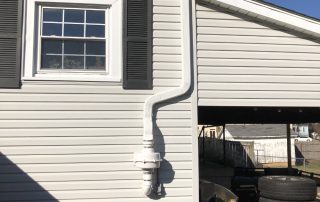Our standard is excellence. Our results, guaranteed.
Does Your Home Have High Radon Levels?
Radon is the leading cause of lung cancer among nonsmokers and the second most common cause of lung cancer among the general population. The Surgeon General and EPA recommend testing for Radon and decreasing Radon levels in homes with levels above 4.0 Picocuries per Liter of air (pCi/L). Even moderately elevated levels of Radon pose a risk because there is no safe level of radon. If your homes radon levels are confirmed to be at or above 4.0 pCi/L ACT NOW! Click this link to see what the EPA says about Radon on their website.

Fixing a Radon problem is a very straight forward process. Our Radon Mitigation system redirects deadly Radon gas out of your home allowing your family a safe breathing environment. Radon Delete’s Radon specialists use only industry best radon equipment that is energy efficient, quiet, properly sized, and installed using best practices with the utmost attention to detail and your home’s aesthetics.
Radon Delete is certified by the National Radon Proficiency Program (AARST-NRPP). We stand behind our work and include a 5 Year Warranty on all Radon Mitigation Systems and guarantee indoor Radon levels at or below 2.7 pCi/L.
Radon Mitigation FAQs
Radon gas is approximately 7.5 times heavier than air. However, it is a noble gas with no chemical affinity but is easily influenced by air movements and pressure.
In a house with forced-air heating and cooling, radon gas can easily be distributed throughout the entire dwelling. When radon gas is discharged via a radon mitigation system above the roof, the radon concentration falls off dramatically with distance from the point of discharge. The radon gas concentration approaches background levels at 3-4 feet from the discharge point.
EPA disallowed ground-level discharge of radon primarily because of the potential for re-entrainment of the gas into the house and because of the possibility of children being exposed to high radon levels. In addition, the concentration of radon gas at the discharge point can be tens of thousands of picocuries per minute.
- Read more about radon at https://www.epa.gov/radon
- Read the Consumer’s Guide to Radon Reduction.
- Read Building Radon Out: A Step-by-Step Guide on How to Build Radon Resistant Homes
You have tested your home for radon, but now what?
If you; have tested your home for radon and confirmed that you had elevated radon levels, 4 picocuries per liter in the air (pCi/L) or higher, our guidance can help you:
- Select a qualified radon mitigation contractor to reduce the radon levels in your home.
- Determine an appropriate radon reduction method.
- Maintain your radon reduction system.
Radon reduction systems work. Some radon reduction systems can reduce radon levels in your home by up to 99 percent.
Most homes can be fixed for about the exact cost as other common home repairs. However, your costs may vary depending on the size and design of your home and which radon reduction methods are needed.
Get a quote from one or more qualified radon mitigation contractors.
There are several ways to lower radon levels in your home. Some techniques prevent radon from entering your home, while others reduce radon levels after it has entered.
EPA generally recommends methods that prevent the entry of radon. Soil suction, for example, prevents radon from entering your home by drawing the radon from below the house and venting it through a pipe, or pipes, to the air above the house, where it is quickly diluted.
Similar to a furnace or chimney, radon reduction systems need some occasional maintenance. It would be best to look at your warning device regularly to make sure the system is working correctly.
Fans may last for five years or more (manufacturer warranties tend not to exceed five years) and may then need to be repaired or replaced. Replacing a fan will cost around $200 – $350, including parts and labor. It is a good idea to retest your home at least every two years to be sure radon levels remain low.
More Resources:
It’s a naturally occurring radioactive gas from the natural breakdown of uranium (radioactive decay). Radon is typically found in soil and igneous rock, and sometimes in water as well. It can be found across the U.S., especially in central Kentucky. Radon quickly dilutes when it releases into the air. As a result, it seeps into buildings through gaps, cracks, and holes.
Natural Sources of Radon
There are multiple natural sources of Radon; some of them are as follow;
- Uranium Ores: It’s found in many soil deposits globally.
- Shales: It’s a sedimentary rock that is formed from clay and mud.
- Igneous Rocks: Rocks that are formed from lava or magma cooling (graphite).
- Phosphate Rock: it contains a higher amount of phosphate level, commonly found in clay.
- Metamorphic Rocks: rock that forms due to the transformation of other rocks forms (marble).
Limestone is also listed down in Radon’s natural sources, but we can’t accept a high level of Radon produced by its decay. An important thing to note is Radon doesn’t result from the decay of natural sources but through different manufactured structures.
Although Radon is primarily found in outdoor air, it becomes more of an issue when building through the basement walls or floor. This is because it usually moves up through the ground to the air above and into your building through cracks and other holes in the foundation. As a result, your home can easily trap Radon inside, where its concentrations can then build up.
Radon in Drinking Water
If the drinking water is exposed to any level or amount of Radon, it may still be considered dangerous for your health. Yes, if the drinking water source is in contact with Radon containing soil, it can easily dissolve in the water. From there, it could enter your home. A standard safe limit is 2.6pCi/L, and if the Radon level goes beyond this, it can pose a severe health threat.
The answer is yes! It can pose a serious health risk to your overall health and especially the respiratory system. If you’re exposed to Radon’s excessive level for an extended period, you could have higher chances of developing lung cancer. According to the EPA Radon is the number one cause of lung cancer among non-smokers in the U.S.. This is a silent killer, and you can’t figure out its effects until it’s too late.
Here are many ways to test your home or a building and begin the mitigation process.
If you doubt that your building has a Radon problem, then the best option is to go for Radon testing. You can find a professional and reliable company for the testing and mitigating process. They can better help you in getting rid of it, depending on the concentration.
Yes, Radon Delete is a Certified Radon Mitigation Contractor.
Radon Delete is certified by the National Radon Proficiency Program (NRPP). Radon Delete’s Radon specialists use only Continuous Air Monitors to accurately test Radon Levels in your home. We stand behind our work and include a 5 Year Warranty on all Radon Mitigation Systems.
We guarantee indoor Radon levels at or below 4 pCi/L. Our Radon mitigation systems can decrease radon levels in your house by as much as 99 percent.
There are many ways Radon can get into your house including drains, sump pumps, basement floor cracks, basement wall cracks construction joints, loose pipe fittings and exposed soil. Radon might also enter the air of a home from well water.
Because radon is a gas, it can easily spread from the ground into the air in a home. The main method in which radon enters a home is through the basement floor including crawl spaces.
Yes. The EPA estimates that over 20,000 preventable deaths in the U.S. can be attributed to exposure to radon decay products. That is twice the amount of drunk driving fatalities each year.
Alpha particles released by radon decay products are the main driver in damage to healthy lung tissue. Smoking combined with radon exposure is especially risky.
You can’t see, smell, or taste radon. However, it still might be an issue inside your house. Radon is a gas atom, and it features a half-life of only about 4 days. Radon gas is completely natural and it forms during the decay of uranium-238, an element that is naturally present in our soil.
Reviews

I cannot say enough positive about our experience with Radon Delete. They were recommended by a friend who had a great experience with them. They were knowledgeable, helpful, professional, and friendly. They stayed in touch and willingly answered all our questions. They did a professional job with cheerful attitudes. We could not be happier with their service.

I cannot speak more highly of Wilson and his team. I had a difficult situation with a large crawl and I wanted only one system. Other radon companies kept saying I needed two systems. Wilson and his crew made it work. I went from radon levels of upper 40s to 0.5. I had about 5 companies come through and Wilson and Radon Delete with his HVAC experience and mechanical design training were far and away the most qualified!

We had a fantastic experience with Radon Delete. The entire process from quote through install and follow up was seamless. Great customer service accompanied by a high level of craftsmanship is hard to find these days and these guys outperformed expectations at every turn. They were very thoughtful on how to make the system look as atheistically pleasing as possible and our radon levels were cut down dramatically after just a few hours of running the system.

We had a fantastic experience with Radon Delete. The whole team was punctual, professional, and informative. Couldn’t recommend them enough!

Radon Delete was fabulous! Wilson communicated frequently and professionally, and was upfront about costs and expectations. The staff did a great job of mitigating radon in our home with a clean, effective solution which matches the aesthetic of our house. Thank you!

Wilson, Nathan and Nick did a phenomenal job. Knowledgeable, capable, and talented in all aspects of the job and were truly a pleasure to work with.

Couldn’t be happier with the installation of our radon mitigation system. Thanks Wilson! I highly recommend them.

